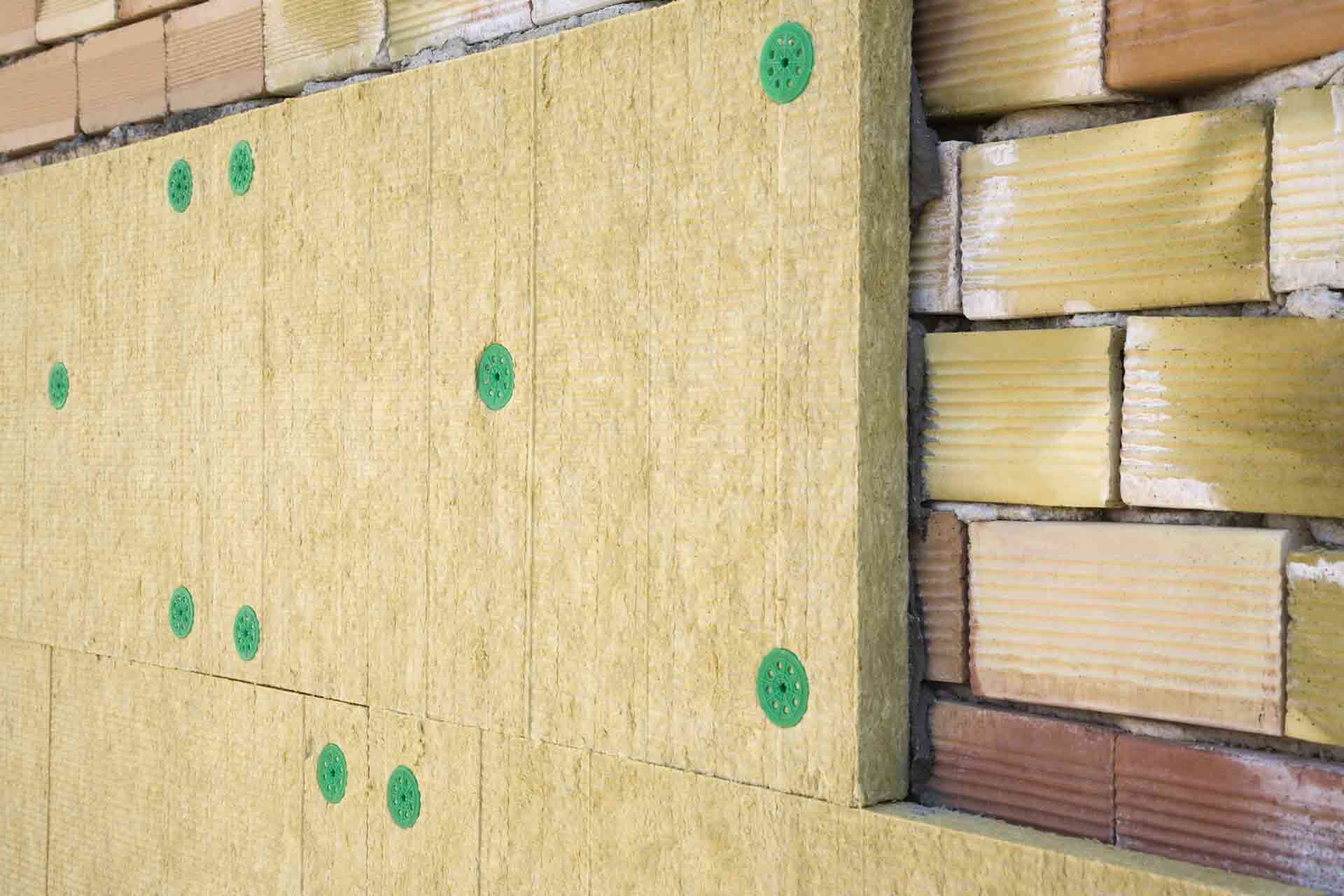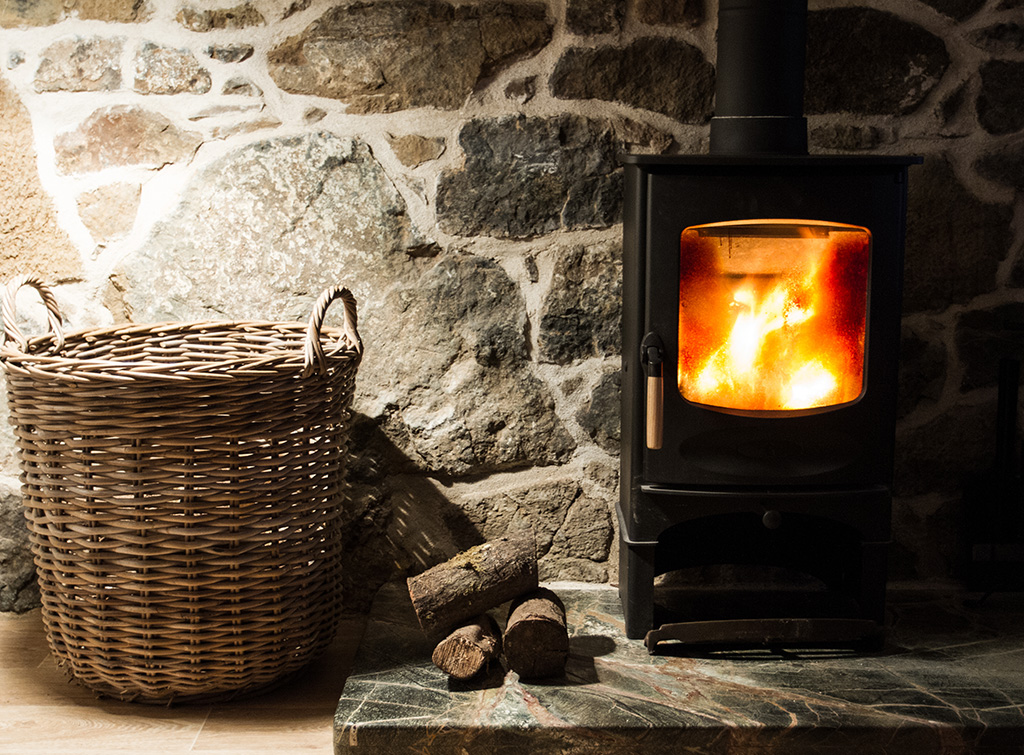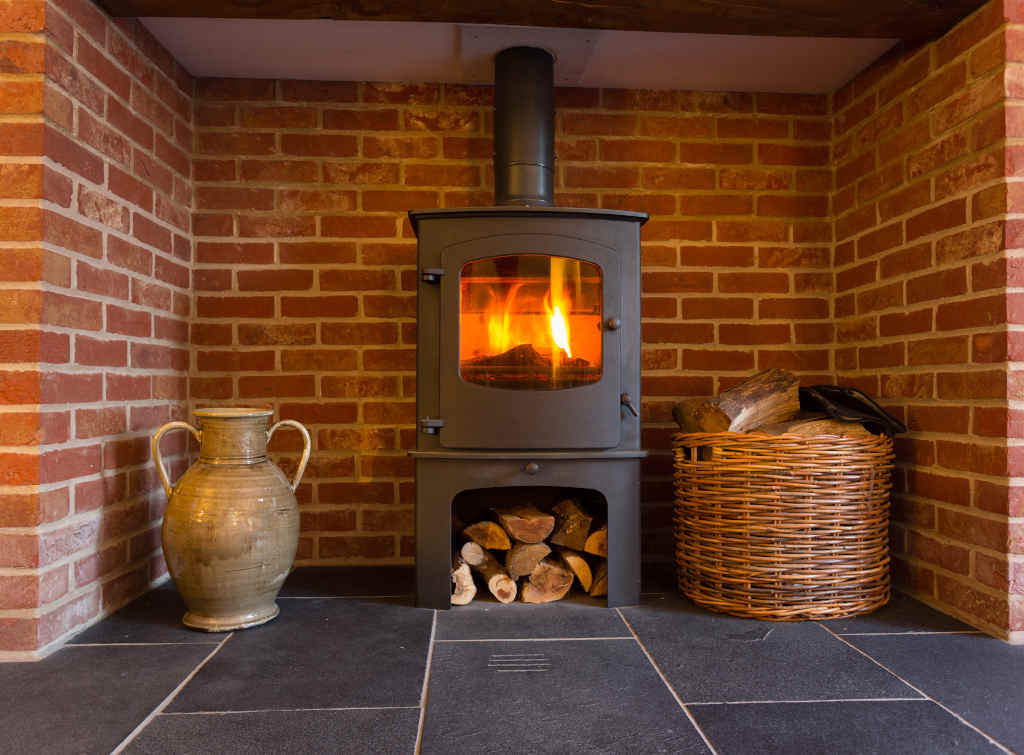Blog>Cost Guides>Cost of a wood burning stove vs gas
Last updated: 5 October 2023
Cost of a wood burning stove vs gas
With the price of energy soaring, many of us are looking for ways to keep our bills down. Here, look at the cost of a wood burning stove vs gas, so you can start saving those pennies!
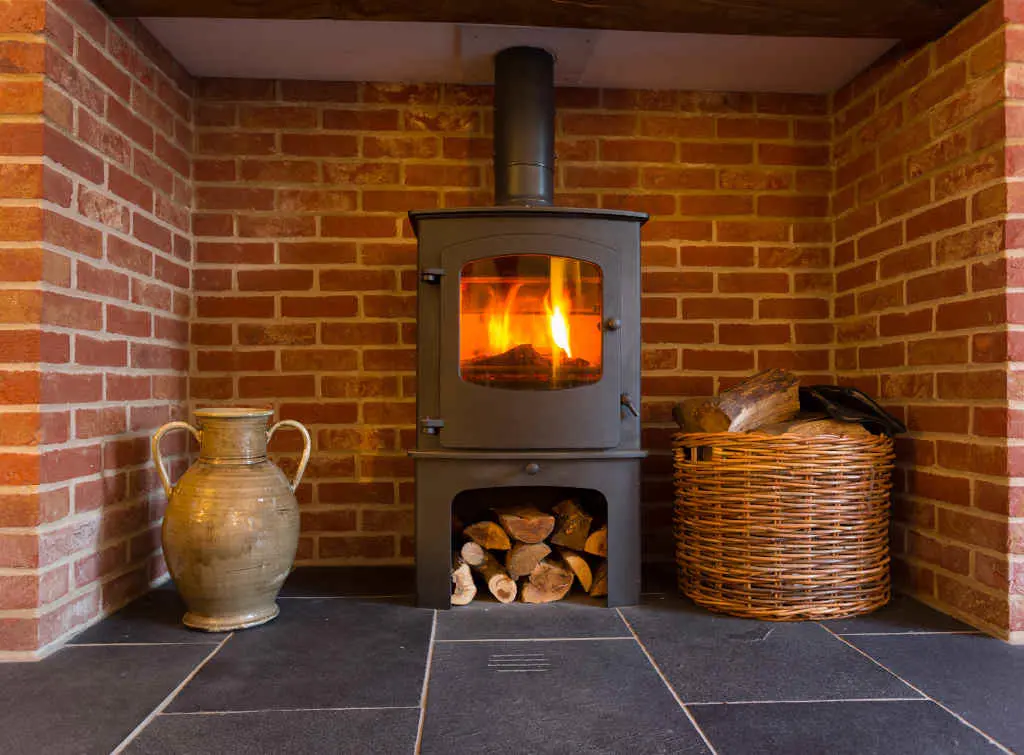
As energy bills soar and the cost of living goes through the roof, more and more households are turning to wood burning stoves. But can this renewable energy source really help to save you money?
Here, we’ll show you the cost of a wood burning stove vs gas so that you can see for yourself.
Cost of a wood burning stove vs gas
According to the Energy Saving Trust, a wood burning stove could shave off around 10% of your heating bills. While a log burner costs around 6pper kWh to run, you’ll typically pay around 7p per kWh for mains gas (information correct as of October 2023).
| Item | Unit | Average cost |
|---|---|---|
| Wood burning stove running costs | Per kWh | 6p |
| Mains gas running costs | Per kWh | 7p |
| New wood burning stove cost | Per stove | £950 |
| Wood burning stove installation cost | Per stove | £2,000 |
| New combi boiler cost | Per boiler | £1,500 + VAT |
| Gas boiler installation cost | Per boiler | £1,500 + VAT |
| Last updated: May 2024 Our costs are ballpark averages - get a local tradesperson to quote now | ||
That said, there are lots of different factors that will impact the cost of a wood burning stove vs gas. Just some of them include:
The size of your wood burning stove
Whether your wood burner heats your water (and radiators)
Whether your wood burner heats your whole house or just one room
The type of wood you’re burning (hardwood burns slower than softwood but costs more)
Whether you’re running your wood burner with vents open or closed
How warm you want to be
The age and efficiency of your wood burning stove
Cost of a wood burning stove
When you’re looking at the cost of a wood burning stove, you’ll need to factor in both running costs and installation costs. If you already have a wood burner, using it as a primary heating source is a no-brainer when it comes to cost. However, if you don’t yet have one, installation costs can be high – especially if you don’t have an existing hearth, fireplace or chimney.
Cost to run a wood burning stove
When it comes to running costs, wood burning stoves trump gas central heating hands down. To run a wood burner, you simply need:
Wood.A cubic metre of kiln-dried logs costs between£120 - £140, which can translate to around £420 - £490 for a whole winter
Firelighters and kindling.Crucial for getting your fire started, these typically come to just £50per year
Yearly chimney sweeping. Getting your chimney swept is important. Chimney sweeping costsare on average £110
Of course, if you’re lucky enough to have a free supply of wood and can store it while it dries out, your wood burning costs will be next to nothing! Check out our guide to how a log burner can help save money on energy bills for more information.
Just bear in mind that some wood burners are more efficient than others. Modern log burners are very efficient at heating the room they’re installed in – in fact, usually, only 20% of the heat they produce is lost up the chimney! However, older log burners won’t be as efficient, which means your running costs will be higher.
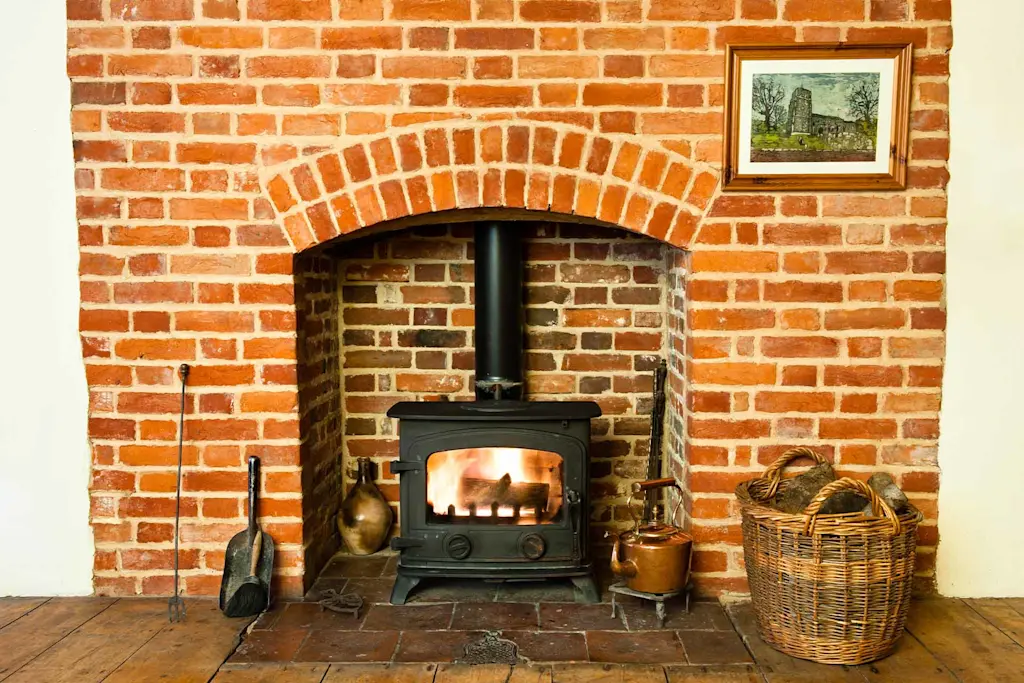
Cost to install a wood burning stove
Generally speaking, you can expect to pay around £950 for the wood burner itself, and then a further £2,000 inlog burner installation costs.
However, these costs can climb if you don’t have an existing fireplace and chimney that you can use. If the installation involves forming a new fireplace and hearth, you’ll typically add between£500 - £2,000 to your installation costs. Plus, if you don’t have a chimney and you need to install an external twin-wall flue, you’ll likely have to pay another £2,000 in materials.
Although these costs might seem high, wood burning stoves are a long-term investment. Given the amount your log burner could save you in energy bills – and the fact that energy prices are forecast to remain high for the rest of the decade – you should make your money back before too long.
See the tradespeople we've checked and recommend for your job
Cost of gas central heating
In the UK, most households have gas central heating. This form of heating is convenient. But with the current cost of living crisis and energy bills spiralling, it’s not the most cost-effective way to heat your home. Let’s take a look at the figures.
Cost to run gas central heating
Running gas central heating certainly costs more than running a wood burning stove. You can expect to spend around 7pper kWhrunning your central heating, as opposed to just 6pper kWh running a log burner.
To put that into perspective, you’re looking at around £13.44 to run your gas central heating for8 hours(for a 24kW boiler). In contrast, you can expect to pay just £11.52 to run your wood burner for the same length of time.
That said, it’s important to note that your central heating will typically heat every room in the house. On the other hand, most log burners will only heat one room, unless your house is particularly small (or you’ve specially installed one that heats water, and therefore your radiators).
So, it’s very difficult to make a direct comparison. It all depends on how warm you want to be, whether you need to heat your whole house all the time, and more.

Cost to install a gas boiler
Most households in the UK already have gas central heating. So, you probably won’t need to worry about gas boiler installation costs.
However, if your home doesn’t have central heating – or your existing boiler is no longer fit for purpose – you might find yourself comparing the cost of installing a gas boiler to the cost of installing a log burner.
Typically, a new combi boiler costs around +VAT for supply and installation.
This isn’t dissimilar to the cost of installing a wood burning stove. However, keep in mind that the two aren’t necessarily interchangeable.
For a fairer comparison, you’d probably need to look at biomass boilers. Amongst the most cost-effective and eco-friendly ways to heat a house, these boilers burn wood pellets that have been sustainably sourced, instead of gas.
So, is a log burner cheaper than gas?
Generally, it’s nearly always cheaper to run a log burner than it is to run your gas central heating system.
If you already have a log burner, using it as a key way to heat your home is a no-brainer.
If you don’t yet have a log burner, you’ll face some hefty installation costs. However, it’s an investment that will almost certainly pay off in the long run.
Having said this, pitting log burners and gas against one another isn’t really a fair comparison. This is because, for most people, a wood burning stove will only heat up one room of the house. That’s fine if you’re happy to spend most of your time in one room during winter, but if not, you’ll likely still want to run your central heating system to keep the other areas of your home toasty.
Does this make log burners defunct? Absolutely not!
Even if your log burner only effectively heats one room, it’ll mean you don’t need to turn your central heating on as often. And it’ll also mean you don’t have to turn it on as high. According to the Energy Saving Trust, turning your thermostat down by just one degree Celcius could save you around £192 per year!
With that in mind, investing in a log burner is a fantastic shout if you’re worried about the cost of living and you want to enjoy lower energy bills both now and in the future!
See the tradespeople we've checked and recommend for your job
More Cost Guides
More Wood / Log Burning Stoves Articles
See the tradespeople we've checked and recommend for your job


